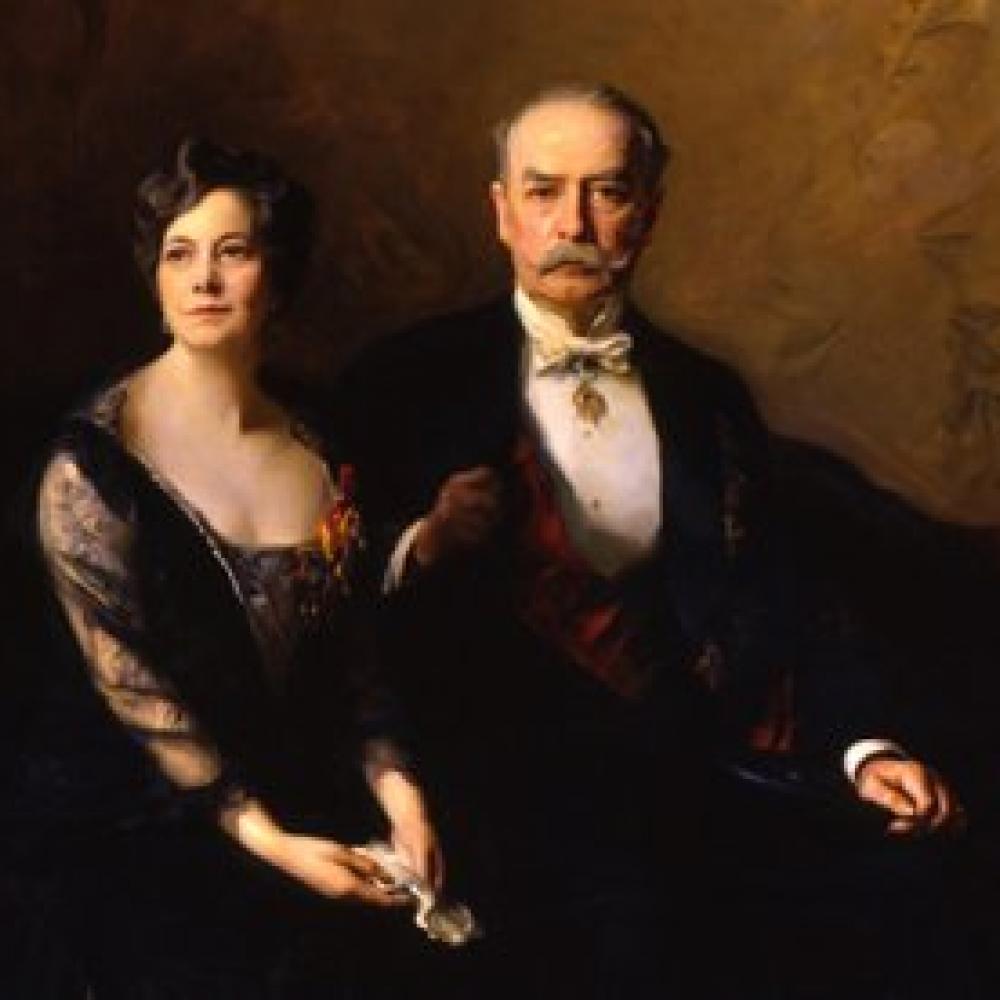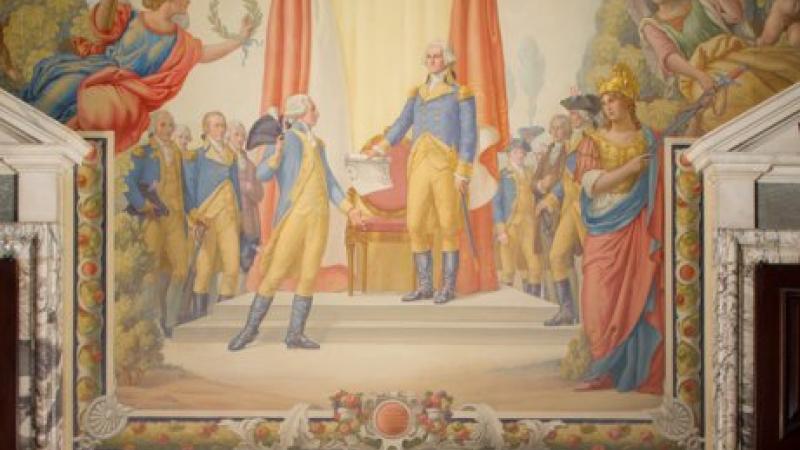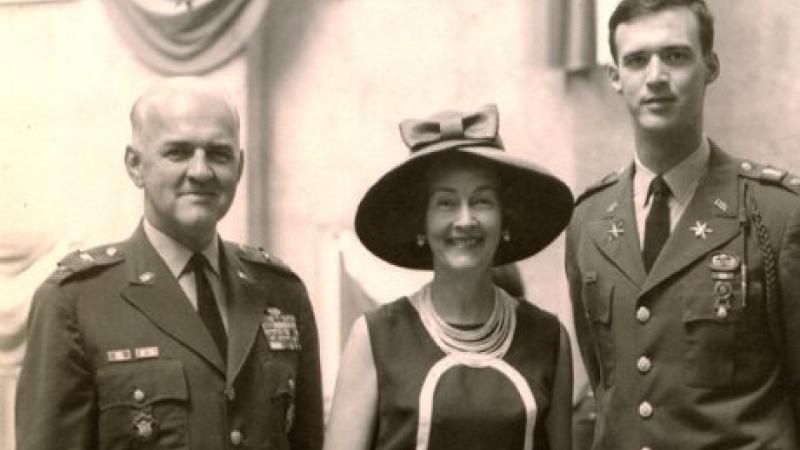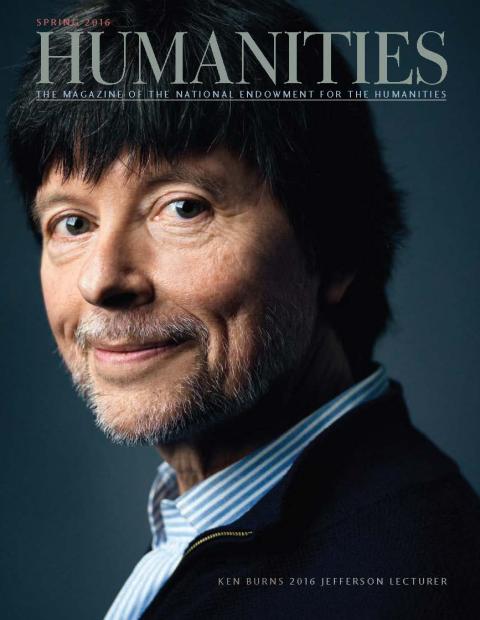Along Embassy Row in Washington, D.C., just west of Dupont Circle, there’s a short stretch of mansions and townhouses dating from the late nineteenth and early twentieth centuries, mostly, and each with a pedigree of some note.
There’s James G. Blaine Mansion, once inhabited by the Republican presidential candidate of 1884, who lost by a narrow margin to Grover Cleveland; the elaborately ornate mansion (now the Indonesian embassy) of Evalyn Walsh McLean, the last private owner of the Hope Diamond; the staid and solid Cosmos Club—modeled on le Petit Trianon at Versailles—long a male enclave, which eventually and reluctantly allowed women in as members; a townhouse where the feisty Alice Roosevelt Longworth lived for decades; the Turkish ambassador’s residence—looking down upon Rock Creek—once inhabited by the inventor of the “crown,” the crimped cap that stoppered many a bottle of soda; and Anderson House, designed by Little & Browne of Boston, under commission from diplomat Larz Anderson and his wife, Isabel, begun in 1902, completed in 1905, and now serving as the national headquarters of the Society of the Cincinnati. The Andersons lived there until 1936, but only during the winter social season, when they entertained diplomats and politicians, and it’s been an article of faith that they built the mansion for the express purpose of it one day becoming the permanent headquarters of the Society. Even among its flashier and better known neighbors, it was this former hub of Washington society, now on a new mission as both a museum and research library, that caught my eye one day ten years ago as I set out to visit every museum in Washington, Alexandria, and the environs over the course of a year.
Perhaps there are legions of folks with doctorates in American history who know all about the Society of the Cincinnati and its role at the close of the Revolutionary War. Upon my first visit to the grand residence with a double-gated porte cochere entranceway, however, I didn’t even make the connection between the Society and Lucius Quinctius Cincinnatus, the fifth-century BCE Roman general who, I now know from reading Livy, led consular armies to victory against the Aequians and shortly thereafter happily returned to plowing his three acres across the Tiber from Rome. Cincinnatus selflessly relinquished the temporary dictatorship accorded to him by the Senate. Exchanging sword for plow after war was, of course, what George Washington did as well, prior to becoming president. And the precedent from Roman history provided a name and a model that resonated well with both an elite and a hoi polloi well-versed in Latin literature (remember, too, that George Washington had chosen Richard Sheridan’s play Cato, to inspire the troops wintering at Valley Forge).
Near the end of the Revolutionary War, in 1783, American leaders were looking to retain friendships forged during conflict, perpetuate and commemorate patriotic sensibilities, and, perhaps most importantly, assure that officers would be able to continue as an organized body of some sort after troops were disbanded. But officers had been paid only sporadically, or not at all, during the war, and plans for half-pay for life, or payment in one lump sum, were going nowhere in the Continental Congress. A number of conspiratorial articles known as the Newburgh addresses, which circulated among officers in New York, contained veiled threats regarding a possible coup. Unrelated, but similar in temperament if not results, the foment of Shays's Rebellion would explode a few years later in western Massachusetts. There had to be a way, short of violence, for the Revolutionary War officers to keep some pressure on Congress. What about a hereditary, fraternal, and charitable society?
John Adams, Benjamin Franklin, Thomas Jefferson, and Elbridge Gerry, however, all took a dim view of anything that smacked of a knighted order, while Alexander Hamilton, Robert Morris, and others advocating for a vigorous federal government, championed the Cincinnati, as they are known in the plural. Thirteen state Societies—one for each of the former colonies—formed shortly after the war, as well as a fourteenth, for the officers from France who had served. Out of this swirling eddy of republican virtue, potential military anarchy, and philosophical squabbling arose the national Society of the Cincinnati.
Touring Anderson House the first time, I was struck immediately by the many allusions to the Society throughout. Portraits of George Washington and Alexander Hamilton (both past presidents general of the Society) hang near the marble-floored foyer, with Hamilton’s showing him wearing the eagle insignia, designed for the Cincinnati by Pierre L’Enfant. Eagles crop up, too, in a trompe l’oeil painting in the reception room and in the wood-paneled ceilings in the ballroom and in places on the second floor, where, in the Key Room, dinner guests received seating assignments from Isabel or sat and chatted afterward in parlors and drawing rooms, surrounded by many other reminders of the patriotic spirit of the Andersons. Larz even had a gilt bronze mantel clock commissioned for the English Drawing Room, incorporating representations of Cincinnatus accepting the rods of jurisdiction—the fasces—from Senate messengers and then hanging up the trappings of power once the war was won.
In the Key Room, there’s a mural representing Larz’s ancestor, Richard Clough Anderson, along with Washington, at the ceremony initiating the Society. Richard was an original member of the Virginia Society, having participated in nearly every important battle of the war. He was severely wounded, returned to action, and wintered at Valley Forge. After the war, he became involved in land speculation in Ohio, where war officers and troops were granted, as payment, certificates entitling them to land. Since it was difficult at the time for many officers, especially those in financial straits, to travel west to Ohio and claim their property, speculators could purchase the certificates for pennies on the dollar and then sell at a great profit. While living and farming in Kentucky, this is what Larz’s great-grandfather did, making himself, and subsequently, Larz, very rich. Another mural in this same room shows a bucolic vision of the Ohio Valley and Cincinnati, or Losantiville as the settlement was known at the time, as they might have appeared to Richard and his contemporaries—a gently rolling and beckoning scene, a Land of Promise. Noted muralist and decorative artist, Paris-trained H. Siddons Mowbray was commissioned by Larz for these depictions, and the intent was to impress his guests with his ancestor’s participation in this great swath of history.
Isabel Weld Perkins met Larz Anderson on a grand tour of Europe in the early 1890s. While in Rome, the American embassy assigned its lively young State Department officer, Larz, to Isabel and her chaperone as a sure-footed cicerone through the antiquities of the Eternal City. Larz and Isabel fell in love and were married shortly thereafter. Isabel’s family was even wealthier than Larz’s. She had inherited most of the fortune her father made furnishing supplies to the Union army during the Civil War. Until they decided to spend the social season in Washington, the couple lived at Weld, their mansion in Brookline, Massachusetts. They traveled in Europe, Asia, Africa, and took private car trips to the Southwest, Mexico, and Canada, even, apparently at Isabel’s request, venturing to Bonaventure River in Quebec for salmon fishing. Except for one year—when the Andersons completely vacated the Washington residence for the king and queen of Siam—Larz and Isabel returned to the capital every year for the social season between 1905 and 1936. Purchases from their many travels decorated Anderson House.
Did Larz and Isabel, in fact, conceive of this mansion from the very beginning as a national headquarters for the Society of the Cincinnati? The architectural references to the Society suggest the Andersons were indeed thinking that the private home would one day serve a larger, more civic-minded role. In addition to many allusions to military service within, there’s a clutch of flags and pennants above the external portico entrance, carved in stone. Many other personal touches throughout, however, emphasize the marital bond of this devoted, intensely private couple. Isabel’s initial, for example, is seen in ceilings here and there, sometimes interlocking with an “L” for Larz. And in the vestibule, the artfully painted ceiling integrates the shield for Harvard, Larz’s alma mater, and references to both Larz’s and Isabel’s families. In the mansion’s Winter Garden more murals by Mowbray express Larz’s interests in cars and motoring. In the Society’s library there are journals and gift books in which Larz created whimsical and loving sketches about his travels and his affections for Isabel. On the landing of the great stairway leading to the second-floor dining room, there’s a billboard-size, frothy painting of a grandly celebratory event in Venice called The Triumph of the Dogaressa, which Larz felt captured his own idea of providing lavish entertainment. The house, then, seems to be an eclectic, even sometimes eccentric, mix of an expression of Larz’s devotion to Isabel, his interest in automobiles, the couple’s commitment to society and entertaining, and Larz’s pride in his lineage and connection to the Society, of which he was a member, first through the Maryland Society, then its Virginian counterpart.
My keen interest in the place had now risen to the level of mild addiction, and one afternoon, while perusing a volume of Larz’s journals (there are more than 30, leather-bound and illustrated with his many charming sketches), I came across a key recollection from 1932, on the occasion of the Society’s presentation of a copy of a portrait of Lafayette to the U.S. government and hung at Arlington House, Robert E. Lee’s residence up till the Civil War and which became part of Arlington Cemetery. Nonchalantly, Larz wrote, “I said that I would be happy to have the officers and members of the Society lunch with me before going over to Arlington for the presentation.” Perhaps a dozen or so guests would come, he thought. Instead, “one hundred and forty accepted.” And, in a tone of serendipity rather than deliberate forethought and prearrangement, he added, “I felt that Anderson House might be an especially suitable place for a gathering of the Cincinnati because so many features commemorating the Society had been introduced into the architecture.” This was the first suggestion I came across that Larz was even thinking of bequeathing the house to the Cincinnati. The size of the turnout obviously surprised him, and for the first time the ballroom, or “music room,” was used for a luncheon. The staff made do. When Larz and Isabel had built the house, they had a large pantry installed next to the “salon,” as they called it, for just that sort of event. “The flying staircase, in fact, had been included,” Larz wrote “so that one might look down from the balcony upon the scene below.” But even on this occasion, there is no indication that he said anything to anyone about any future plans for the mansion.
“I think his feelings toward his ancestors were very personal,” Ellen Clark, the library director, tells me one day. In fact, there’s no hard evidence that Larz ever intended to bequeath the house to the Society. Isabel arranged for that, presumably at his personal request to her, though, after Larz’s death in 1937.
An Anderson House docent recently reflected on this, too, and observed that it’s remarkable that the archives of the Society survived so well for so long without a permanent home. Included in these treasures, under very tight lock and key now at the Anderson House, is the eagle insignia worn by Washington during his tenure as president general.
The Society’s library is intended for research and public programs. Its holdings include orderly notebooks documenting commands, troop movements, and other aspects of the Revolutionary War, The Robert Charles Lawrence Fergusson Collection covers books, prints, and other materials relating to the eighteenth century, while the library also boasts a vast collection of children’s and young adult literature on the Revolutionary War and Isabel’s travelogs and children’s books she wrote in the early twentieth century. Isabel also penned a memoir called Presidents and Pies: Life in Washington, 1897–1919, in which she quotes inaugural party guest Alice Longworth at her pluckiest while at the Anderson House—where parties for the newly elected Taft were being given on successive nights—“This is the goat party—the swells are asked for to-morrow night!”
At this point, I possibly qualify as an Anderson House / Society of the Cincinnati groupie. I soak up the place now as I go along, taking the tour for the umpteenth time, delving into tomes in English or French in the library. One day in the Society’s library I notice a framed black-and-white photograph of three people—in which there’s a well turned-out woman in a hat, a sixties-era dress, possibly Chanel-inspired, and wearing high heels. She’s flanked by two men in uniform, one quite young, maybe 22. The woman has a powerful mien, the older man, an officer, has a set determination that’s perhaps mellowed a touch through the years of service, and the young man, taller than either adult, has the look of intelligence and anticipation—a portrait it seems to me that could have sprung from a similar family during the most virtuous periods of the Roman Republic. I draw nearer to where the photograph hangs in a place of prominence on a column near the stacks. A label identifies the young man as Robert Lawrence Fergusson. A light bulb pops on in my mind—the Robert Charles Lawrence Fergusson Collection!
I ask Ellen Clark about the connection between the young soldier and the collection, which includes much military history in French. Robert Fergusson attended West Point but didn’t graduate. Ellen fills me in. The younger Fergusson was honorably discharged from West Point during his sophomore year, possibly for academic reasons. He finished college in spring 1966 at the University of Richmond, where he received a commission and began serving in the army shortly thereafter. Before leaving for artillery training, he did the paperwork to become a member of the Virginia Society of the Cincinnati but couldn’t attend the meeting where new members were acknowledged. The younger Fergusson was among the first descendants of a Revolutionary War officer—due to a recent new rule—to become a member while his father was still living. Another new member who attended that night made a mental note that he would like to meet Fergusson one day. But, in October 1967, First Lt. Fergusson received a bullet wound to the head at close range while in combat in Vietnam. He died weeks later in a hospital in Japan. Lt. Fergusson’s fellow inductee to the Society sometime later made a very generous, and anonymous, financial gift to the Society’s library, which the staff can use for acquisitions. This is how the Robert Charles Lawrence Fergusson Collection came to be.
This is the type of knowledge that makes a museum so difficult to “interpret,” as they say in the biz. Museums have a short time in which to create a narrative for the public, from the front door to the last display case. During my self-imposed tour of more than a hundred museums in 2006, I learned that, for example, Carlyle House in Alexandria can be interpreted one way one year and, based on new scholarship or archaeological evidence, another way just a year or two later. The same is true at places like Gadsby’s Tavern, also in Alexandria, and Virginia neighbors Mount Vernon and Gunston Hall, and Tudor Place, Dumbarton House, and the Old Stone House in Georgetown.
So, the question of whether or not Larz Anderson and wife Isabel originally thought of their newly minted mansion as a future home for the Society of the Cincinnati still looms. It can never be answered fully, perhaps. It’s all up for interpretation—and reinterpretation.




